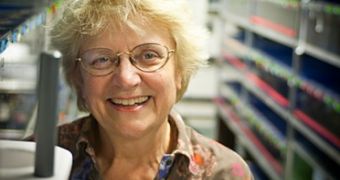A team of investigators has recently determined that both human and zebra fish tumors share a trait known as aneuploidy, which basically means that their cancerous cells have to many chromosomes.
Scientists discovered more than a century ago that certain tumor cells contain more copies of certain chromosomes than usual, and hypothesized that this gave the cells an edge in surviving.
Generally, the vast majority of cells in the human body have an 23 chromosomes, which contain all our genetic material stored neatly within. But tumors have extra copies of these structures.
This condition, known as aneuploidy, was now demonstrated to exist in animal species as well, say researchers at the Massachusetts Institute of Technology (MIT).
The group here, led by professor Nancy Hopkins, says that the new finding could help make zebra fish a better model for studying various forms of cancer in humans.
Details of this investigation appear in the September issue of the esteemed journal Proceedings of the National Academy of Sciences (PNAS).
Hopkins is convinced that this line of research could result in identifying new genetic targets for drugs meant to fight cancer. Aneuploidy has not been demonstrated in other animal models before.
That is not to say the phenomenon does not occur at all. Some mice can be genetically engineered to develop tumors, and they will exhibit aneuploidy at times.
But they never produce highly aneuploid tumors, which means that their resemblance to us diminishes. This in turn makes them poor animal model for this type of investigation.
The study also yielded some interesting conclusions, especially when the experts looked at which kinds of chromosomes were expressed more in aneuploid tumors.
“If you looked at hundreds of patients with the same type of tumor, you could imagine it would be totally random, but that’s not what is seen,” explains MIT research scientist Adam Amsterdam.
“Some chromosomes are much more often overamplified while others are underrepresented,” he adds. “That already gives us reason to think the genes could be the same,” Hopkins argues.
She is the Amgen Professor of Biology at the Institute, and also a member of the David H. Koch Institute for Integrative Cancer Research at MIT.

 14 DAY TRIAL //
14 DAY TRIAL //